Understanding Fire Risks Associated with Hybrid Car Batteries

Hybrid vehicles have gained popularity for their environmental benefits and fuel efficiency, but along with their innovative technology comes a potential risk: fire incidents involving hybrid car batteries. We delve into the complexities of hybrid car batteries, exploring the fire risks associated with their use and what measures can be taken to mitigate these risks. Hybrid car batteries serve as the power source for electric propulsion in hybrid vehicles, complementing the internal combustion engine. Understanding the intricacies of these batteries is crucial for ensuring vehicle safety and preventing potential hazards, such as fire incidents. Overview of Hybrid Car Battery Composition Hybrid car batteries consist of several key components, including lithium-ion cells, electrolytes, separators, and battery management systems. Every part of the battery is important for how well it works and how safe it is. But if these parts aren’t taken care of properly, they can make the risk of fires higher. Common Causes of Hybrid Car Battery Fires People like hybrid cars because they help the environment and use less gas. However, along with their innovative technology comes the risk of battery fires, which can have serious consequences. We explore the common causes of hybrid car battery fires and discuss preventive measures to enhance safety. Hybrid car battery fires can be caused by several factors, including: Overcharging: Charging the hybrid battery too much can make it too hot, which might start a fire. This could happen if the charging system doesn’t work right or if the battery management system Manufacturing defects: Defects in the manufacturing process of the hybrid battery or its components can increase the risk of a fire. These defects may include issues with cell assembly, insulation, or faulty wiring. Physical damage: Damage to the battery pack, such as from collisions or accidents, can compromise its integrity and lead to short circuits or thermal runaway, resulting in a fire. Prolonged exposure to high temperatures: Hybrid batteries are sensitive to high temperatures, and prolonged exposure to heat can degrade their performance and increase the risk of a thermal event. Improper maintenance: Neglecting routine maintenance tasks such as cooling system checks or failing to replace worn-out components can contribute to the degradation of the hybrid battery and increase the likelihood of a fire. Incompatible modifications: Modifications to the hybrid system or electrical components that are not approved or properly installed can lead to electrical faults or short circuits, posing a fire hazard. Software glitches: Software glitches or malfunctions in the hybrid system’s control software can cause unexpected behavior, leading to excessive charging, overheating, or other conditions that may result in a fire. Age and wear: As hybrid batteries age, they may become more prone to internal faults or degradation, increasing the risk of a fire, especially if they are not replaced or maintained properly. Preventive Measures and Safety Protocols To prevent hybrid car batteries from catching fire, makers use different safety steps to make sure it’s less likely to happen. These steps keep people in the car and nearby safe. Engineering Solutions Manufacturers incorporate various engineering solutions to enhance the safety of hybrid car batteries: Thermal Management Systems: In hybrid cars, special systems are used to control how hot the battery gets. These systems help prevent overheating, which can lead to thermal runaway and battery fires. Reinforced Battery Enclosures: Battery enclosures are reinforced with fire-resistant materials to contain potential fires and prevent them from spreading to other parts of the vehicle or the environment. This helps stop things from getting damaged or people from getting hurt if the battery catches fire. Battery Management Systems (BMS) Sophisticated battery management systems are deployed to monitor and control battery performance: Monitoring and Regulation: The BMS keeps an eye on things like how hot the battery is, how much electricity it has, and if it’s full or not. By analyzing this data in real-time, the system can detect abnormalities and take corrective actions to prevent overcharging, overheating, and other potential safety hazards. Fault Detection and Prevention: BMS is equipped with advanced fault detection algorithms to identify any anomalies or malfunctions within the battery system promptly. By detecting and addressing issues proactively, BMS helps prevent battery fires and ensures the overall safety and reliability of the vehicle. Compliance with Safety Standards Makers follow very strict rules to make sure hybrid car batteries are good quality and dependable. Regulatory Compliance: Hybrid car batteries need to meet tough safety rules from groups like the National Highway Traffic Safety Administration (NHTSA) and the International Organization for Standardization (ISO). Compliance with these standards is essential to ensure the safe operation of hybrid vehicles and minimize the risk of battery-related incidents. Quality Assurance: Manufacturers implement robust quality assurance processes to verify the safety and reliability of hybrid car batteries throughout the production process. These steps involve very thorough testing, checking, and making sure the batteries are safe before they’re put into cars. Industry Regulations and Standards Regulatory bodies and industry standards organizations play a crucial role in establishing safety requirements for hybrid vehicles and their components. Makers have to follow very strict safety rules and do lots of testing to make sure they’re following the rules. By following these standards, manufacturers can uphold the safety and reliability of hybrid car batteries. Public Awareness and Education Public awareness campaigns and educational initiatives are essential for informing consumers about the fire risks associated with hybrid car batteries. Drivers should be aware of the signs of battery malfunction and understand the importance of following manufacturer guidelines for battery maintenance and charging. Moreover, emergency responders require specialized training to handle hybrid car accidents safely and effectively.
Exploring Advanced Systems in Hybrid Car Batteries
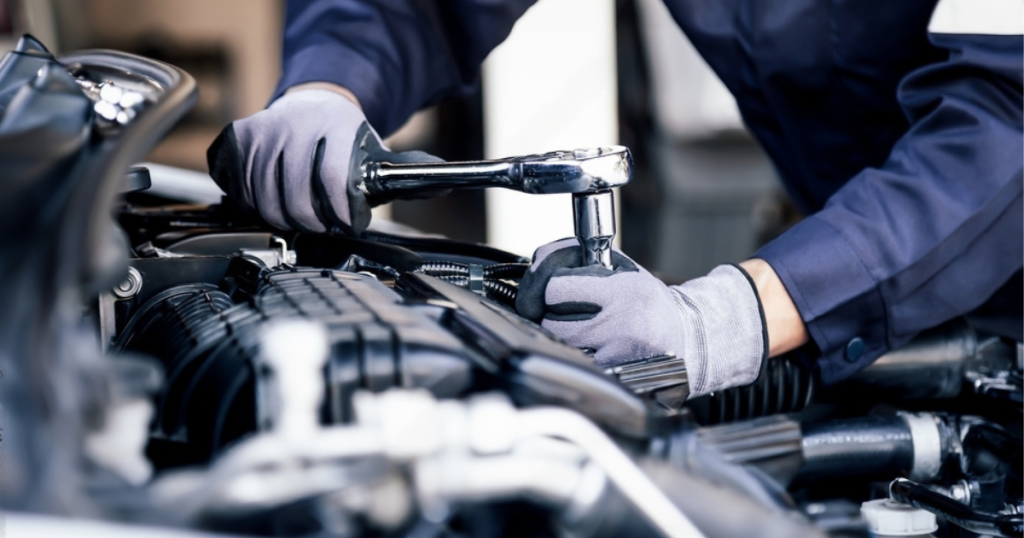
Hybrid cars have revolutionized the automotive industry by offering a sustainable and eco-friendly alternative to traditional gasoline-powered vehicles. At the heart of these innovative vehicles lies the hybrid car battery, a sophisticated system that combines the best of traditional combustion engines with electric propulsion. We delve into the world of hybrid car batteries, exploring their advanced features, cutting-edge technologies, and prospects. Introduction to Hybrid Car Batteries Hybrid cars use different types of power to make them move. They usually have a regular engine like other cars, but they also have electric motors. People started using hybrid cars more because they save fuel, produce fewer harmful gases, and are better for the environment. Central to the operation of hybrid vehicles are advanced hybrid car batteries, which store and deliver electrical energy to power the electric motors. Types of Hybrid Car Batteries Hybrid car batteries come in various types, each with its unique characteristics and advantages, catering to different needs and preferences in the realm of hybrid vehicle technology. Nickel-Metal Hydride (NiMH) batteries Nickel-metal hydride (NiMH) batteries are often used in hybrid cars because they can store a lot of energy and are known to be dependable. These batteries use a nickel ox hydroxide cathode, a metal hydride anode, and an alkaline electrolyte. Lithium-ion (Li-ion) batteries Lithium-ion (Li-ion) batteries have become more popular lately because they can hold more energy and are lighter than NiMH batteries. These batteries use lithium ions to store and release energy when the battery is charged or used. Solid-State batteries Solid-state batteries are the next big thing in hybrid car battery tech. Unlike regular batteries, they use a solid instead of a liquid or gel to conduct electricity. This makes them store more energy, safer, and charge faster. Advanced Features of Hybrid Car Batteries Advanced hybrid car batteries boast several key features that set them apart from conventional automotive batteries. Energy density Energy density means how much energy a battery can hold in a certain amount of space or weight. Advanced hybrid car batteries offer higher energy densities, allowing for increased range and improved performance. Power output The power output of a hybrid car battery decides how fast the car can speed up and how well it performs overall. Advanced batteries can deliver higher power outputs, resulting in quicker acceleration and smoother driving experiences. Charge/discharge efficiency Efficient charge and discharge processes are essential for maximizing the performance and lifespan of hybrid car batteries. Advanced systems utilize innovative materials and designs to improve charge/discharge efficiency, reducing energy losses and optimizing battery performance. Lifespan The lifespan of a hybrid car battery is a critical factor in determining the overall cost-effectiveness of the vehicle. Advanced battery technologies are designed to withstand thousands of charge/discharge cycles without significant degradation, ensuring long-lasting performance and reliability. Innovations in Hybrid Car Battery Technology New improvements in hybrid car battery tech have made energy storage better, more dependable, and kinder to the environment. Silicon anodes Silicon is becoming a good option instead of graphite for the part of the battery that stores energy. Silicon anodes offer higher energy densities and faster charging rates, leading to improved overall battery performance. Graphene-enhanced batteries Graphene, which is a type of carbon with a unique two-dimensional structure, has demonstrated significant potential to improve the performance of hybrid car batteries. Graphene-based electrodes enable faster charge/discharge rates, increased energy densities, and improved durability. Sodium-ion batteries Researchers are investigating sodium-ion batteries as a cheaper and eco-friendly option compared to lithium-ion batteries. These batteries use sodium ions instead of lithium ions, providing similar performance but at a reduced cost. Wireless charging Wireless charging makes it so you don’t need to plug in your hybrid car to charge it. This gives hybrid car owners more convenience and flexibility. Advanced wireless charging systems are capable of delivering high-power charges rapidly and efficiently. Benefits of Advanced Hybrid Car Batteries New hybrid car batteries are really good for people and the environment. Improved performance Advanced battery technologies result in higher energy densities, faster charge/discharge rates, and greater power outputs, leading to improved overall performance and driving experiences. Increased range Higher energy densities and improved efficiency translate to increased driving ranges for hybrid vehicles, reducing the need for frequent recharging and enhancing the practicality of electric propulsion. Environmental impact By reducing reliance on fossil fuels and lowering emissions, hybrid car batteries contribute to environmental conservation and sustainability efforts, mitigating the impact of transportation on air quality and climate change. Cost-effectiveness Even though they might cost more at first, advanced hybrid car batteries can save money in the long run. They use less fuel, and needless fixing, and are better for the environment, making them a smart choice for transportation. Challenges and Limitations Despite their numerous advantages, advanced hybrid car batteries face several challenges and limitations that must be addressed. Cost The expensive nature of batteries presents a major hurdle for many prospective hybrid car purchasers, particularly impacting those on a budget. This financial barrier may discourage individuals from considering hybrid options, despite their advantages in fuel economy and eco-friendliness. Safety concerns The use of advanced materials and technologies in hybrid car batteries raises safety concerns related to overheating, fire hazards, and chemical leaks, necessitating robust safety protocols and regulations. Recycling and disposal The complex composition of hybrid car batteries poses challenges for recycling and disposal, leading to concerns about environmental pollution and resource depletion. Future Outlook and Trends Scientists are still working hard to make better hybrid car batteries. They’re trying to solve problems and find new ways to make batteries even better. Research and development Continued investment in research and development is essential for advancing hybrid car battery technologies, improving performance, reducing costs, and enhancing safety and sustainability. Market growth The growing demand for hybrid and electric vehicles, coupled with government incentives and regulatory mandates, is expected to drive significant growth in the hybrid car battery market in the coming years. Integration with renewable energy systems Hybrid car batteries are really important because they help mix
The Role of Lithium-ion Technology in Hybrid Car Batteries
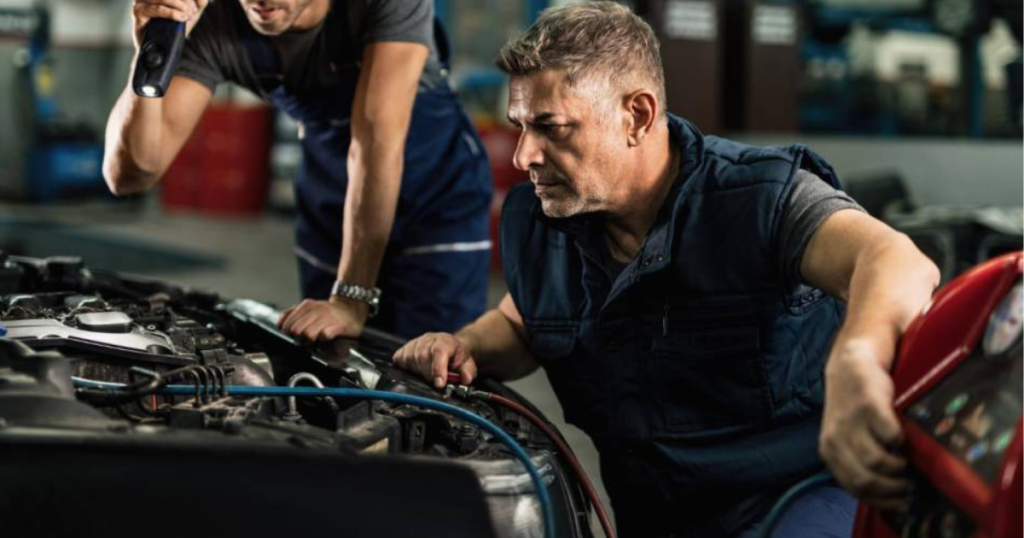
Hybrid cars have become more and more popular lately because they offer a mix of regular gas engines and fully electric cars. At the heart of these vehicles lies the lithium-ion battery, a crucial component that enables efficient energy storage and power delivery. Hybrid cars represent a significant innovation in automotive technology, aiming to reduce fuel consumption and greenhouse gas emissions while providing drivers with a more sustainable transportation option. The role of lithium-ion technology in hybrid car batteries is central to achieving these goals. Evolution of Hybrid Car Batteries In the early stages of hybrid vehicles, nickel-metal hydride (NiMH) batteries were commonly used. However, with advancements in technology, lithium-ion batteries have become the preferred choice due to their superior performance and energy density. Advantages of Lithium-ion Technology Lithium-ion batteries offer several advantages over traditional battery technologies. Their high energy density allows for greater storage capacity within a smaller and lighter package. Additionally, they boast a longer lifespan and can be charged more rapidly than their predecessors. Integration in Hybrid Vehicles Manufacturers have seamlessly integrated lithium-ion batteries into their hybrid car models, leveraging the technology to optimize performance and fuel efficiency. These batteries work in tandem with the internal combustion engine and electric motor to provide power when needed, resulting in smoother acceleration, improved fuel economy, and reduced emissions. Environmental Impact One of the primary motivations behind the adoption of hybrid vehicles is their potential to reduce environmental impact. By incorporating lithium-ion batteries, hybrid cars can operate on electric power for short distances, minimizing the use of gasoline and reducing emissions of carbon dioxide and other pollutants. Furthermore, the recyclability of lithium-ion batteries ensures that their environmental footprint is minimized even after they reach the end of their lifespan. Challenges and Limitations Despite their numerous advantages, lithium-ion batteries face certain challenges and limitations. The initial cost of hybrid cars equipped with lithium-ion batteries may be higher than their conventional counterparts, although this gap is gradually narrowing as battery technology advances and production scales up. Safety concerns, such as the risk of thermal runaway and fire, also exist, necessitating robust safety features and protocols. Future Prospects The future of lithium-ion technology in hybrid car batteries looks promising, with ongoing research and development efforts focused on further improving performance, safety, and affordability. Innovations such as solid-state batteries hold the potential to revolutionize the hybrid car industry, offering even higher energy density and longer lifespan. Consumer Considerations For consumers considering purchasing a hybrid car, understanding the role of lithium-ion technology is essential. While hybrid vehicles offer numerous benefits, including fuel efficiency and environmental sustainability, potential buyers should also consider factors such as maintenance requirements, battery lifespan, and upfront costs. How Li-ion Powers Hybrid Functionality HEVs combine an internal combustion engine with an electric motor. Li-ion batteries play a critical role in this synergy: Electric Assist: The battery provides electric power to the motor, assisting the gasoline engine during acceleration, and reducing the overall workload and fuel consumption. Regenerative Braking: During braking, the HEV captures kinetic energy and converts it into electricity. This recovered energy is stored in the Li-ion battery for later use. Silent Cruising: In certain situations, the HEV can operate solely on electric power delivered by the battery, enabling quiet, zero-emission driving for short distances. Considerations and Future Developments While Li-ion is the clear winner, there are still aspects being addressed: Cost: Li-ion batteries are currently more expensive than NiMH alternatives. However, as production scales up and technology advances, the cost is expected to decrease. Thermal Management: Li-ion batteries can degrade at extreme temperatures. HEVs come equipped with cooling systems to maintain optimal battery temperature, adding complexity. Research and development in Li-ion technology are ongoing, focusing on: Cost Reduction: Utilizing alternative materials and optimizing manufacturing processes can bring down battery costs. Safety Improvements: Enhancing battery chemistry and management systems can further improve safety. Faster Charging: Reducing charging times can improve the overall user experience of HEVs.
Decoding P3025: Hybrid Battery Assembly Malfunction
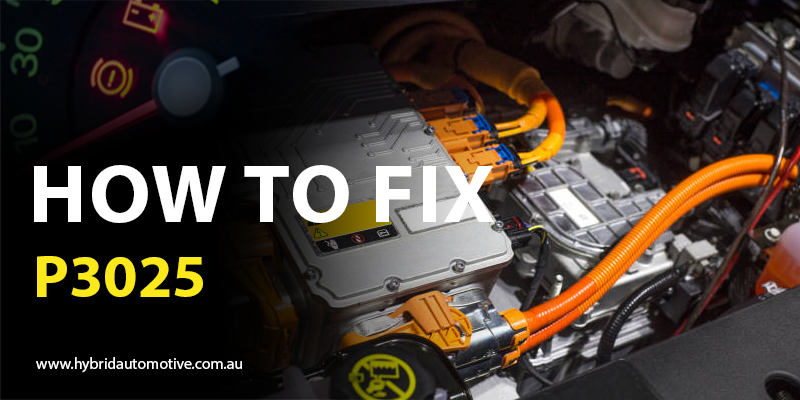
In the realm of automotive diagnostics, encountering a P3025 fault code can signal a significant issue, particularly when it pertains to the hybrid battery assembly. This specific fault code can cause concern among vehicle owners, prompting them to seek immediate solutions. Understanding the potential causes behind this code is crucial for effective diagnosis and repair. In this article, we delve into the possible reasons for the P3025 code, how to address it, and the associated costs of diagnosis. Fix this P3025 Possible Causes Hybrid Battery Deterioration: Over time, hybrid batteries can degrade due to factors such as age, usage patterns, and environmental conditions. This deterioration may manifest in various ways, including reduced capacity and voltage irregularities, ultimately triggering fault codes like P3025. Cell Imbalance: Within a hybrid battery pack, individual cells can experience variances in performance and capacity. Cell imbalance can occur due to factors like manufacturing inconsistencies or prolonged periods of inactivity, leading to voltage disparities that trigger fault codes. Faulty Battery Management System (BMS): The BMS plays a crucial role in monitoring and regulating the hybrid battery’s performance. If the BMS malfunctions or loses calibration, it may misinterpret battery data, causing erroneous fault code notifications like P3025. Internal Battery Faults: Physical damage, internal short circuits, or component failures within the hybrid battery can lead to the emergence of fault codes. These faults may arise from manufacturing defects, thermal stress, or improper handling of the battery assembly. External Factors: Environmental conditions such as extreme temperatures, moisture ingress, or exposure to contaminants can adversely affect hybrid battery performance and contribute to the occurrence of fault codes like P3025. How to Fix Resolving a P3025 fault code typically involves a systematic approach aimed at diagnosing and rectifying the underlying issues. Here are steps commonly undertaken to address this issue: Diagnostic Scanning: Begin by using a diagnostic scanner to retrieve the specific fault code (P3025) and assess any accompanying codes or data related to hybrid battery performance. Visual Inspection: Conduct a visual inspection of the hybrid battery assembly, checking for signs of physical damage, corrosion, or loose connections. Inspect the battery terminals, wiring harnesses, and associated components for any abnormalities. Battery Testing: Utilize specialized equipment to perform comprehensive testing of the hybrid battery, including capacity tests, voltage measurements, and cell balancing assessments. Identify any cells or modules exhibiting irregularities or failures. BMS Calibration: If deemed necessary, recalibrate the Battery Management System to ensure accurate monitoring and control of hybrid battery parameters. This may involve software updates or reprogramming procedures conducted by qualified technicians. Component Replacement: Replace any defective components identified during the diagnostic process, such as faulty cells, damaged wiring, or malfunctioning BMS modules. Ensure that replacements adhere to manufacturer specifications and quality standards. Environmental Remediation: Implement measures to mitigate environmental factors that could impact hybrid battery performance, such as improving ventilation, sealing potential ingress points, or installing protective barriers. Post-Repair Verification: After completing repairs or replacements, conduct thorough testing and verification to confirm the resolution of the P3025 fault code. Perform test drives and monitor battery performance to ensure stability and reliability. Cost to Diagnose The cost of diagnosing a P3025 fault code can vary depending on several factors, including the vehicle make and model, the complexity of the diagnostic procedure, and the rates charged by the service provider. Typically, the diagnostic fee for hybrid battery related issues can be a few dollars. Call for Cost. Additional costs may arise if special equipment, replacement of parts, or extensive testing is required. Vehicle owners need to consult with reputable automotive technicians or hybrid specialists for accurate diagnosis and repair estimates. Transparent communication regarding costs and procedures can help facilitate informed decision-making and ensure the timely resolution of P3025 fault codes.
Demystifying P3024 Code: Hybrid Battery Fault
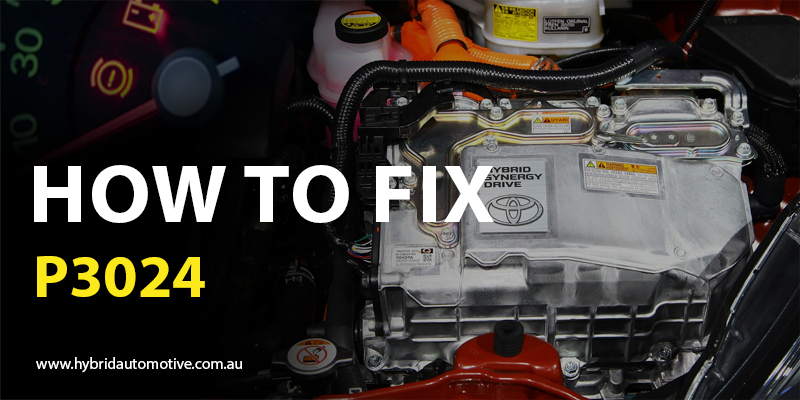
In today’s era of hybrid vehicles, technology has revolutionized the way we drive, offering efficiency and eco-friendliness. However, like any complex system, hybrids can experience issues, one of which is indicated by the P3024 fault code. This code points towards problems with the hybrid battery assembly, which is a crucial component in these vehicles. Understanding the possible causes, how to fix them, and the associated costs can aid hybrid owners in resolving this issue effectively. Fix this P3024 Possible Causes Battery Cell Degradation: Over time, the individual cells within the hybrid battery pack may degrade due to repeated charging and discharging cycles. This degradation can lead to reduced overall capacity and performance, triggering the P3024 code. Faulty Battery Management System (BMS): The BMS is responsible for monitoring and managing the health of the battery pack. If the BMS malfunctions or provides inaccurate data, it may erroneously trigger the P3024 code, even if the battery cells are in good condition. High Voltage System Malfunction: Issues with the high voltage system, such as faulty wiring or connectors, can interfere with the proper functioning of the hybrid battery assembly, leading to the P3024 fault code. Temperature Extremes: Extreme temperatures, whether extremely hot or cold, can negatively impact the performance and longevity of hybrid batteries. Prolonged exposure to such conditions may contribute to triggering the P3024 code. How to Fix Diagnostic Scan: The first step in addressing the P3024 code is to conduct a diagnostic scan using a professional OBD-II scanner. This will help identify the precise cause of the problem, whether it’s associated with the battery cells, BMS, or other components. Battery Health Check: If the scan reveals battery cell degradation as the culprit, a comprehensive health check of the hybrid battery assembly is necessary. This may involve testing individual cells, assessing overall capacity, and identifying any damaged modules. BMS Calibration or Replacement: In cases where the fault lies with the BMS, recalibration or replacement may be required. This process ensures accurate monitoring and management of the hybrid battery pack, preventing further issues and the recurrence of the P3024 code. High Voltage System Inspection: A thorough inspection of the high voltage system is essential to identify and rectify any wiring faults, loose connections, or damaged components contributing to the P3024 fault code. Temperature Control: Implementing measures to regulate the temperature surrounding the hybrid battery assembly can help mitigate the impact of extreme temperatures on its performance and longevity. This may involve installing thermal insulation or cooling systems. Associated Diagnostic Costs The cost of diagnosing and fixing the P3024 fault code can vary depending on several factors, including the extent of the issue, the vehicle’s make and model, and labor rates at the service facility. Call for Price. The cost of repairs or component replacements, such as addressing battery cell degradation, BMS recalibration or replacement, and high voltage system repairs, can significantly impact the overall expense. Depending on the severity of the issue and the need for parts replacement, Repair costs can be a few dollars.
DTC P3023: Hybrid Battery Assembly Issues
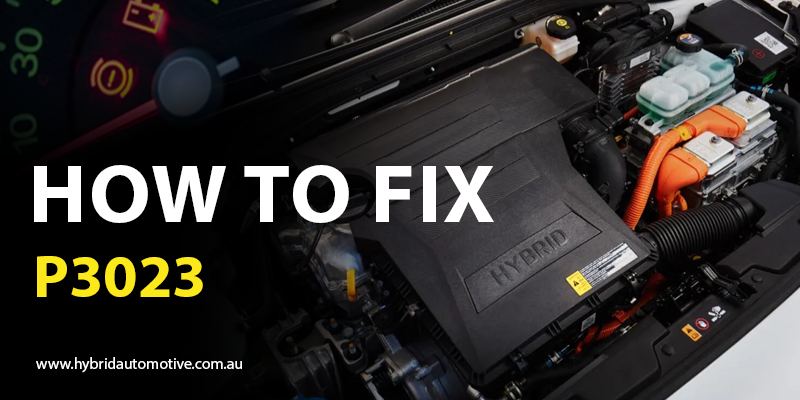
In the realm of automotive diagnostics, the dreaded DTC P3023 can send shivers down the spine of hybrid vehicle owners and technicians alike. This diagnostic trouble code, often associated with hybrid battery assembly malfunctions, demands careful attention and swift resolution to ensure optimal vehicle performance and longevity. Let’s delve into the possible causes, effective fixes, and associated costs of tackling the elusive P3023 code. Fix P3023 Troubleshooting DTC P3023 DTC P3023 signifies a fault within the hybrid battery assembly, a critical component in hybrid vehicles responsible for storing and delivering electrical energy to power the electric motor alongside the internal combustion engine. When this code emerges, it indicates a deviation from expected parameters, triggering a warning light on the dashboard and potentially impacting vehicle drivability. Possible Causes of DTC P3023 Hybrid Battery Degradation: Over time, hybrid batteries can experience degradation, leading to diminished performance and triggering fault codes like P3023. Cell Imbalance: Discrepancies in cell voltage or capacity within the hybrid battery assembly can trigger the code, highlighting issues with cell health or balancing systems. Temperature Extremes: Exposure to extreme temperatures, both hot and cold, can accelerate battery degradation and increase the likelihood of fault codes like P3023. High Mileage: Vehicles with high mileage may encounter hybrid battery issues due to prolonged usage, contributing to cell degradation and eventual fault code activation. Manufacturing Defects: In uncommon instances, manufacturing flaws or quality control problems within the hybrid battery assembly can appear as DTC P3023. How to Fix DTC P3023 Addressing DTC P3023 necessitates a systematic approach and, in certain instances, professional assistance. Below are potential solutions: Battery Health Check: Conduct a comprehensive evaluation of the hybrid battery assembly to assess overall health, identifying any cells or modules exhibiting abnormalities. Cell Balancing: Implement cell balancing procedures to rectify voltage or capacity imbalances within the battery pack, restoring optimal performance. Battery Replacement: In severe cases of degradation or irreparable damage, replacing the hybrid battery assembly may be necessary to eliminate DTC P3023 and restore vehicle functionality. Temperature Management: Implement strategies to mitigate temperature extremes, such as shielding the battery from excessive heat or cold, to minimize degradation and prevent recurring fault codes. Software Updates: In some instances, software updates provided by the manufacturer may address underlying issues contributing to DTC P3023, offering a cost-effective solution. Cost to Diagnose the Code The cost of diagnosing DTC P3023 can vary significantly depending on factors such as the vehicle’s make and model, diagnostic equipment availability, and the expertise of the service provider. On average, diagnostic services for hybrid battery-related issues, including thorough inspections and potential battery health assessments, can range from Call to exact price. In DTC P3023 serves as a crucial indicator of hybrid battery assembly issues, demanding prompt attention and thorough diagnosis to ensure continued vehicle reliability and performance. By understanding the potential causes, effective fixes, and associated costs of addressing this fault code, hybrid vehicle owners and technicians can navigate the complexities of hybrid battery maintenance with confidence, keeping their vehicles running smoothly for miles to come.
Strategies to Resolve P3017 Hybrid Battery Assembly Challenges
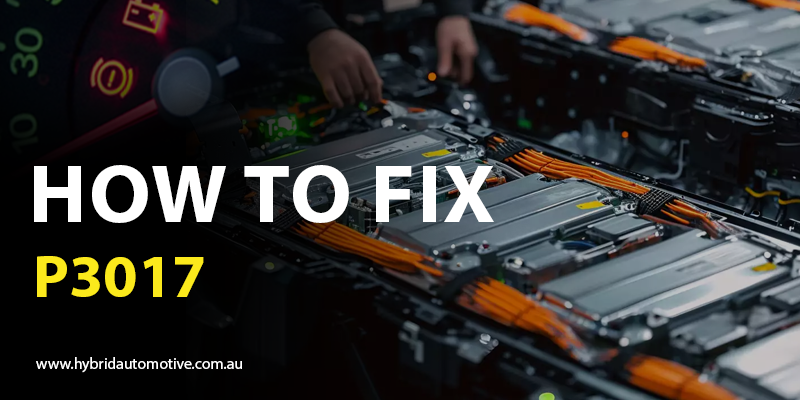
In the realm of hybrid vehicles, the P3017 diagnostic trouble code (DTC) holds significance, especially in Toyota models. This code indicates a potential issue with the hybrid battery assembly, which a critical component in hybrid vehicles’ is functioning. Understanding the possible causes behind this code and how to address it is essential for hybrid vehicle owners and technicians alike. Fix this P3017 What is the DTC P3017 Toyota? The DTC P3017 is specific to Toyota and indicates a problem with the hybrid battery assembly. It signifies an imbalance in voltage levels among modules within the hybrid battery pack. When this code emerges, it activates either the check engine light or the hybrid system warning light on the dashboard, indicating the necessity for prompt attention. Possible Causes of the DTC P3017 Toyota Hybrid Battery Cell Degradation: Over time, individual cells within the hybrid battery can degrade, leading to voltage imbalances and triggering the P3017 code. Faulty Battery Modules: Manufacturing defects or internal damage to battery modules can cause voltage discrepancies, resulting in the DTC P3017. Temperature Extremes: Extreme temperatures, both hot and cold, can impact the performance and health of the hybrid battery, potentially leading to voltage imbalances and triggering the code. Charging System Issues: Issues with the vehicle’s charging system, like a faulty alternator or voltage regulator, can impact the charging process of the hybrid battery and lead to voltage imbalances. Electrical Faults: Wiring issues, loose connections, or corroded terminals within the hybrid battery system can disrupt the flow of electricity, leading to voltage disparities and the appearance of the P3017 code. How to Fix the DTC P3017 Toyota Battery Pack Replacement: In cases of severe degradation or internal damage to the hybrid battery modules, replacing the entire battery pack may be necessary to resolve the issue and clear the code. Module Balancing: Performing a manual balance of the battery modules to equalize voltage levels can sometimes rectify the problem, especially if the voltage imbalances are minor. Diagnostic Testing: Thorough diagnostic testing using specialized equipment can help pinpoint the exact cause of the voltage imbalances, allowing for targeted repairs or replacements as needed. Addressing Charging System Issues: If the P3017 code is related to charging system problems, such as a faulty alternator or voltage regulator, repairing or replacing these components can restore proper charging functionality to the hybrid battery. Inspecting Electrical Connections: Conducting a comprehensive inspection of all electrical connections and wiring associated with the hybrid battery system can identify and resolve any loose connections or corroded terminals contributing to the voltage imbalances. Cost to Diagnose the Code The cost to diagnose the DTC P3017 in a Toyota hybrid vehicle can vary depending on several factors, including the technician’s labor rates, the extent of diagnostic testing required, and any necessary repairs or replacements. Diagnostic fees typically range from $100 to $200, while repairs or replacements of the hybrid battery assembly can range from several hundred to several thousand dollars, depending on the severity of the issue and whether a new battery pack is required. Call for Exact Cost.
Resolving P3018 Error: Hybrid Battery issues
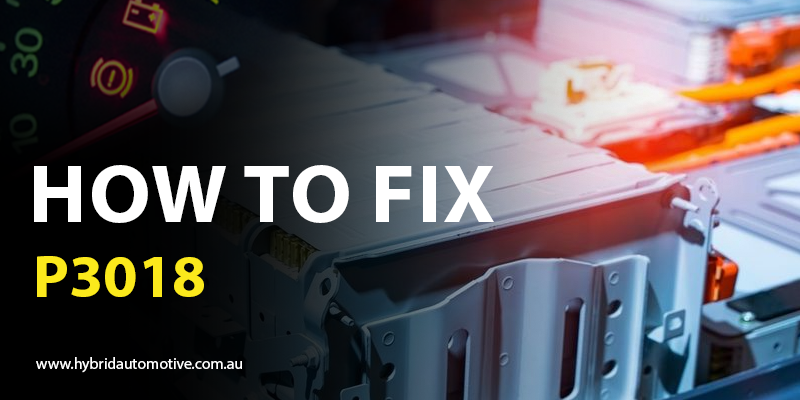
The emergence of a Diagnostic Trouble Code (DTC) like P3018 in Toyota hybrids can be a daunting experience for vehicle owners. This code specifically points towards issues with the hybrid battery assembly, leading to various performance concerns. Understanding the possible reasons and solutions is crucial for effective diagnosis and repair. Fix this P3018 Possible Causes of DTC P3018 Toyota Hybrid Battery Degradation: Over time, the hybrid battery may degrade due to age, usage patterns, or environmental factors. This decline can result in diminished performance and activate the P3018 code. Faulty Battery Cells: Individual cells within the hybrid battery assembly can develop faults or deteriorate, causing imbalance and affecting the overall performance of the battery system. Battery Management System (BMS) Malfunction: Issues with the BMS, responsible for monitoring and managing the hybrid battery, can result in erroneous readings and the triggering of DTC P3018. High Voltage System Faults: Any faults within the high voltage system, including wiring issues, connectors, or related components, can lead to inconsistencies in the hybrid battery’s performance, triggering the DTC. How to Fix the DTC P3018 Toyota Hybrid Battery Replacement: In cases of severe degradation or significant cell damage, replacing the hybrid battery assembly may be necessary to resolve the P3018 code and restore optimal performance. Cell Module Replacement: If the issue lies with specific cells within the battery pack, replacing these faulty modules can sometimes rectify the problem without the need for a complete battery replacement. BMS Reprogramming or Replacement: Updating or replacing the BMS software can address communication errors and ensure accurate monitoring and management of the hybrid battery, resolving the DTC. High Voltage System Inspection: Thoroughly inspecting and testing the high voltage system components, including wiring, connectors, and related modules, can help identify and rectify any underlying faults contributing to the P3018 code. Cost to Diagnose the Code The expense of diagnosing the P3018 DTC in a Toyota hybrid may fluctuate based on various factors, such as the particular model, the severity of the problem, and the labor charges at the repair shop. Call for Cost. Vehicle owners need to consult with certified technicians or specialized hybrid repair shops to accurately diagnose and address DTC P3018 issues. Timely consideration of these issues can aid in averting additional harm and guaranteeing the ongoing dependability and effectiveness of Toyota hybrid vehicles.
Decoding DTC P3019: Hybrid Battery Assembly Fault
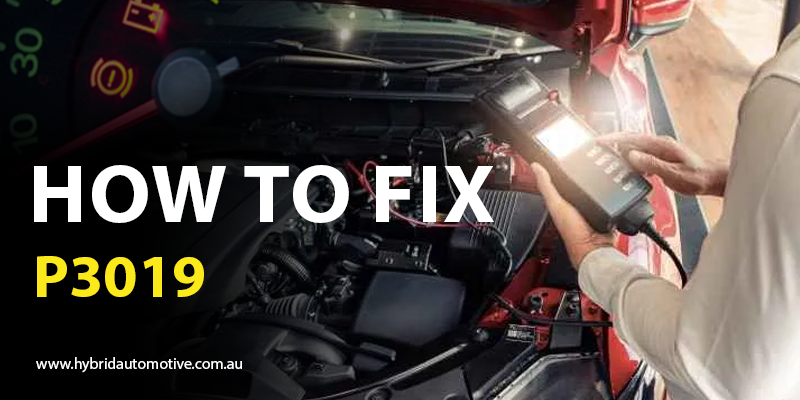
When your Toyota vehicle’s check engine light illuminates, and you retrieve Diagnostic Trouble Code (DTC) P3019, it’s crucial to understand its implications. In Toyota’s hybrid models, this code specifically points to issues with the hybrid battery assembly. Here’s a comprehensive look into the possible causes, solutions, and associated diagnostic expenses. Fix this P3019 Understanding DTC P3019 DTC P3019 is a generic OBD-II code indicating a problem within the hybrid battery assembly. In Toyota hybrids, such as the Prius or Camry Hybrid, this code signals potential issues with the high-voltage battery pack or its related components. The battery assembly is a critical component of the hybrid system, responsible for storing and supplying energy to the electric motor. Possible Causes of DTC P3019 Hybrid Battery Degradation: Over time, hybrid batteries can deteriorate due to aging, usage patterns, and environmental conditions. This degradation can result in diminished performance and activate fault codes like P3019. Cell Imbalance: Within the hybrid battery pack, individual cells may experience variances in voltage or capacity, leading to imbalances. These imbalances can result in inefficiencies or malfunctions, triggering the DTC. Faulty Battery Cells: Individual cells within the battery pack may fail due to manufacturing defects, wear, or other factors. A single faulty cell can affect the overall performance and trigger diagnostic trouble codes. Temperature Vulnerability: Extreme temperatures, whether scorching or freezing, can impact the performance and lifespan of hybrid batteries. Elevated temperatures can expedite degradation, whereas cold temperatures can decrease efficiency and prompt fault codes. How to Fix DTC P3019 Battery Replacement: In many cases, resolving DTC P3019 involves replacing the hybrid battery assembly. This solution is typically recommended when the battery has degraded significantly or has faulty cells. Cell Balancing: If the issue stems from cell imbalances, technicians can perform cell balancing procedures to equalize voltage levels across the battery pack. This may mitigate the fault code and improve battery performance. Diagnostic Testing: Thorough diagnostic testing is essential to pinpoint the exact cause of DTC P3019. Technicians use specialized tools and software to assess the condition of the hybrid battery assembly and identify any underlying issues. Software Updates: In some instances, software updates provided by Toyota may address compatibility issues or optimize the hybrid system’s performance, potentially resolving the fault code without physical repairs. Cost to Diagnose and Repair The cost of a DTC P3019 diagnosis can depend on several factors, including the vehicle model, the need for diagnostic testing, and the underlying cause of the fault code. Call now for the cost. DTC P3019 in Toyota Hybrids signals potential issues with the hybrid battery assembly, necessitating prompt attention to ensure optimal vehicle performance and safety. Understanding the possible causes and solutions empowers owners to address the issue effectively, whether through battery replacement, diagnostic testing, or software updates. Consulting with certified technicians and prioritizing regular maintenance can help mitigate the risk of encountering this fault code and ensure the longevity of the hybrid system.
Faulty Hybrid Battery Assembly: Decoding P3020
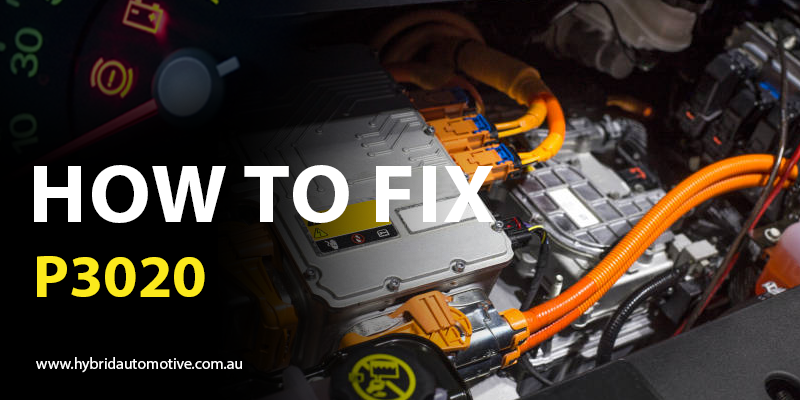
When your Toyota hybrid vehicle triggers a Diagnostic Trouble Code (DTC) P3020, it’s a signal that something’s amiss with the hybrid battery assembly. This DTC specifically relates to issues within the hybrid battery pack, which is a crucial component in the vehicle’s hybrid system. Understanding the potential causes of this code can help diagnose and resolve the problem efficiently. Fix this P3020 Possible Causes of the DTC P3020 Toyota Hybrid Battery Cell Degradation: Over time, the individual cells within the hybrid battery pack can degrade, leading to reduced performance and triggering fault codes like P3020. Internal Battery Module Faults: Faults within the internal modules of the hybrid battery, such as wiring issues or electronic component failures, can also lead to this DTC. Temperature-related Problems: Extreme temperatures, both hot and cold, can impact the performance and health of the hybrid battery assembly, potentially causing issues that trigger the P3020 code. High Voltage System Malfunctions: Any malfunction within the high-voltage system, including the battery cooling system or the inverter, can indirectly affect the performance of the hybrid battery assembly and result in DTC P3020. Software or Sensor Issues: Sometimes, the problem may not lie within the hardware components themselves but rather in the sensors or software that monitor and control the hybrid battery system. How to Fix the DTC P3020 Toyota Diagnostic Scan: Begin by conducting a comprehensive diagnostic scan using a suitable OBD-II scanner to retrieve the specific fault codes and identify the underlying issue. Inspect Hybrid Battery Assembly: Thoroughly inspect the hybrid battery assembly for any visible signs of damage or degradation, including physical damage to the battery casing or corroded terminals. Check Internal Battery Modules: If no external damage is evident, delve deeper into the internal battery modules, checking for loose connections, damaged wiring, or faulty electronic components. Address Temperature Concerns: Ensure that the hybrid battery assembly is operating within the recommended temperature range, addressing any cooling or heating issues as necessary. Software Updates or Resets: Sometimes, a simple software update or system reset can resolve communication or sensor-related issues, clearing the DTC P3020 code. Replace Faulty Components: If any components within the hybrid battery assembly are found to be faulty or beyond repair, they may need to be replaced to rectify the problem. Cost to Diagnose the Code The cost to diagnose the DTC P3020 in a Toyota hybrid can vary depending on several factors, including the diagnostic fees charged by the service provider, the extent of the inspection required, and any necessary repairs or component replacements. In DTC P3020 in Toyota, hybrids are often indicative of issues within the hybrid battery assembly, necessitating thorough diagnostic procedures and potential component replacements to resolve the problem effectively. By comprehending the potential causes and adhering to suitable troubleshooting procedures, hybrid vehicle owners can guarantee optimal performance and reliability from their vehicles.
